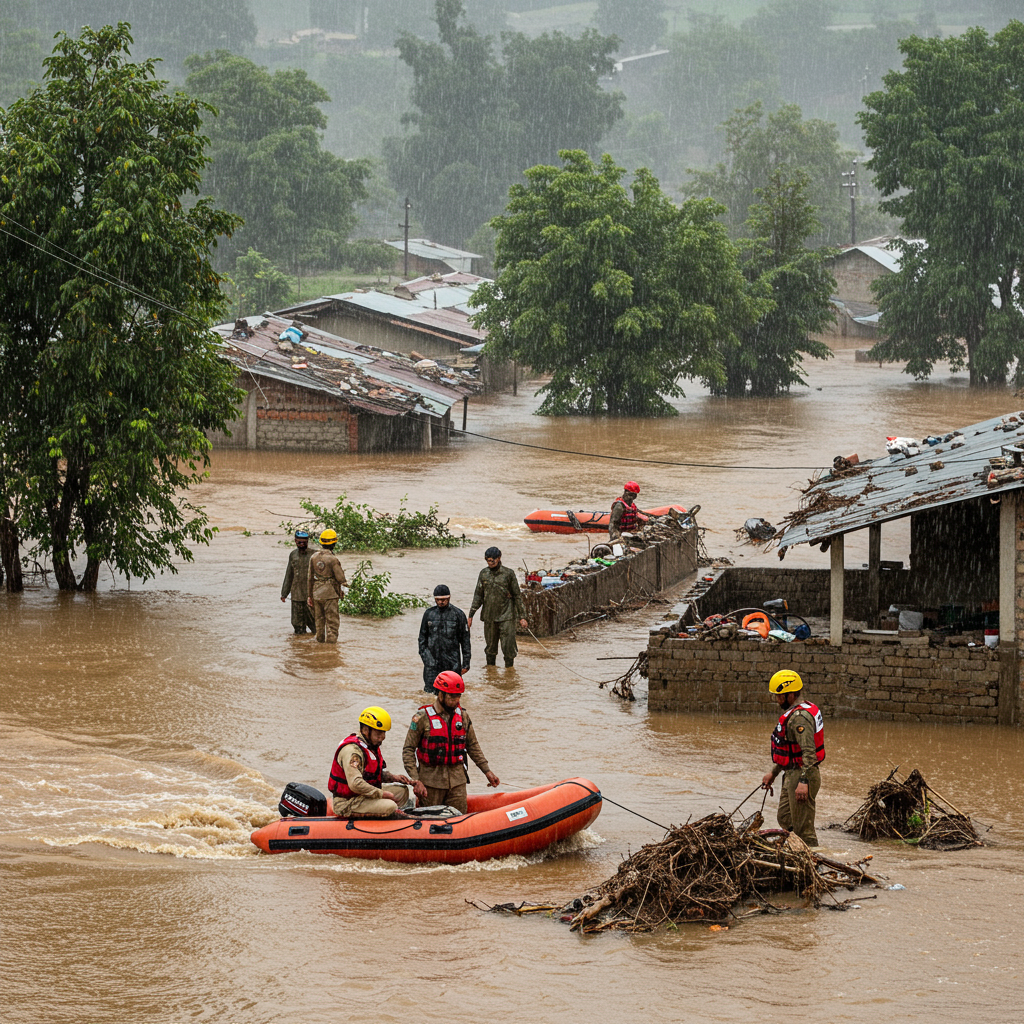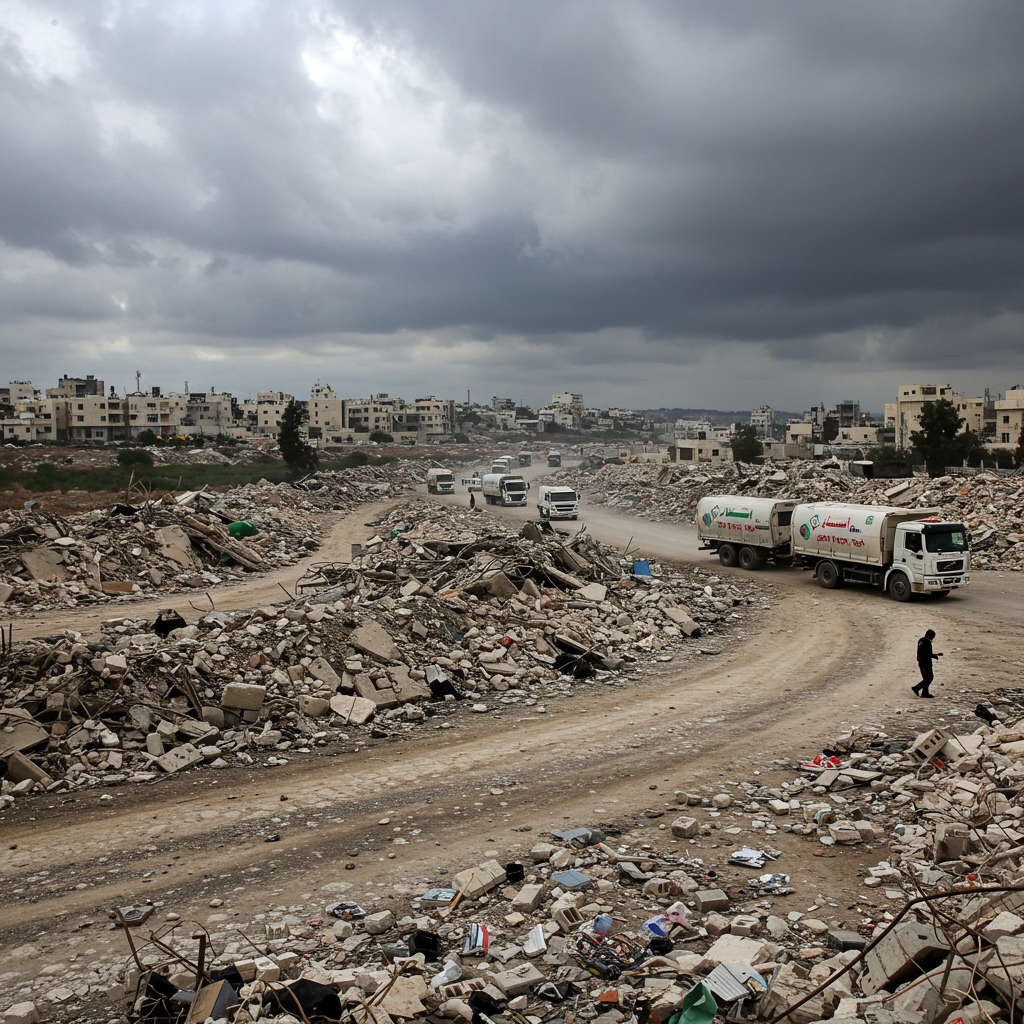A profound humanitarian crisis is unfolding in Pakistan’s northwest as torrential monsoon rains trigger deadly flash floods and landslides. The death toll from these catastrophic deluges, particularly in the Buner district, has tragically climbed to at least 220. Emergency services continue their desperate search for survivors amidst widespread devastation. Forecasts warn of further intense rainfall, threatening to exacerbate an already dire situation across affected regions. This latest tragedy underscores the increasing vulnerability of Pakistan to extreme weather, a phenomenon experts increasingly link to a changing global climate.
Unfolding Catastrophe: The Human Toll
The immediate impact of Friday’s relentless rains was swift and brutal. Flash floods, characterized by immense force and speed, swept through villages, flattening homes within minutes. In the Buner district of Khyber Pakhtunkhwa province, officials confirmed the staggering loss of at least 220 lives. Overnight, rescue teams tirelessly recovered an additional 63 bodies from the rubble of destroyed houses. The sheer volume of water, combined with “tons of rocks” and boulders carried by the torrents, transformed once-bustling communities into scenes of unimaginable destruction.
Eyewitnesses described the sudden onslaught of water. It arrived without warning, transforming small streams into raging rivers. Many victims perished before reaching medical aid, highlighting the rapid nature of the disaster. Disturbingly, a significant number of those who lost their lives were children and men. Women, often engaged in collecting firewood or grazing cattle in the hills, were away from their homes during the worst of the flooding. This sad fact points to the specific vulnerabilities within these rural communities.
Eyewitness Accounts: Surviving the Deluge
Survivors of the Buner floods recount harrowing tales of escape and loss. One local police officer, Imtiaz Khan, narrowly avoided the deluge himself. He described how floodwaters, laden with hundreds of massive boulders, struck and obliterated homes instantly. “A stream near Pir Baba village in Buner swelled without warning,” Khan explained. “We thought it was a normal flash flood. But when tons of rocks came crashing down, 60 to 70 houses were swept away in moments.” His own police station was destroyed. Khan and his colleagues survived only by scrambling to higher ground as the waters rose.
The scale of the devastation was unprecedented for many residents. Sultan Syed, 45, who suffered a broken arm, observed, “It was not just the floodwater; it was a flood of boulders as well, which we saw for the first time in our lives.” Another resident, Mohammad Khan, 53, echoed the sentiment of helplessness, stating the floods “came so fast that many could not leave their homes.” These personal accounts paint a vivid picture of the sheer power and unexpected nature of the disaster.
Beyond Buner: Widespread Devastation
While Buner district, specifically Pir Baba and Malik Pura villages, bore the brunt of the recent casualties, the monsoon’s fury extends far wider. Across Khyber Pakhtunkhwa and the northern region of Gilgit-Baltistan, at least 351 people have died in rain-related incidents this week alone. This figure is part of a broader national crisis; the National Disaster Management Authority reports that monsoon activity has claimed some 541 lives across Pakistan since June 26.
The regional impact is also evident in neighboring areas. In India-controlled Kashmir, the remote village of Chositi in Kishtwar district suffered a similar fate. Flash floods two days prior to the Buner tragedy killed 60 people and injured around 150. Rescue operations there are ongoing, with authorities evacuating thousands of pilgrims who were in the area for an annual Hindu pilgrimage. The interconnectedness of these events across the Himalayan regions underscores a broader environmental challenge.
The Climate Connection: Intensifying Monsoons
Experts and officials increasingly link the heightened frequency and intensity of these destructive cloudbursts and monsoon events to climate change. Pakistan has experienced higher-than-normal monsoon rainfall this year, a worrying trend that suggests a pattern of escalating extreme weather. The country’s Meteorological Department has issued further warnings. They predict torrential rains in the coming days, with monsoon activity likely to intensify from Sunday onwards, particularly in the northern and northwestern regions.
This current crisis echoes the devastating 2022 monsoon season, Pakistan’s worst on record. That year, over 1,700 lives were lost, and the nation sustained an estimated $40 billion in damages. The repeated severe flooding incidents highlight the urgent need for robust climate adaptation strategies and resilient infrastructure. Despite government warnings advising against travel to vulnerable northern and northwestern regions, many tourists have unfortunately ignored these advisories, further complicating rescue efforts.
Immediate Response and Lingering Challenges
In the wake of the disaster, hundreds of rescue workers are relentlessly searching for survivors. First responders are focused on recovering bodies from the hardest-hit villages like Pir Baba and Malik Pura. As floodwaters begin to recede in some areas, the extent of the destruction becomes clearer: wrecked homes, giant rocks littering streets, and entire swathes of villages destroyed.
Pakistan’s leadership, including the Prime Minister and President, have extended their condolences to the bereaved families. They have also offered prayers for the rapid recovery of the injured. The Chief Minister of Khyber Pakhtunkhwa, Ali Amin Gandapur, affirmed that efforts are underway to repair vital roads and other damaged infrastructure. Beyond rescue and immediate aid, authorities are supplying tents and food to the displaced. Mourners, like local cleric Mufti Fazal, have led mass funerals, reflecting the profound grief gripping communities where, just days ago, life was bustling. Schoolteacher Suleman Khan’s tragic loss of 25 extended family members, while he and his brother survived only by being away from home, illustrates the depth of personal devastation.
A Call for Resilience and Preparedness
The ongoing monsoon crisis in Pakistan serves as a stark reminder of the country’s severe vulnerability to climate-induced disasters. The repeated cycle of torrential rains, flash floods, and mudslides demands more than just immediate emergency response. It necessitates a long-term commitment to climate resilience, improved early warning systems, and strategic infrastructure development. Protecting communities requires not only rapid relief but also proactive measures to mitigate future impacts. The human cost of these events is immeasurable, underscoring the critical need for global climate action and sustained support for nations on the front lines of climate change.
Frequently Asked Questions
What caused the recent devastating floods in Pakistan?
The recent devastating floods in Pakistan are primarily caused by higher-than-normal monsoon rainfall, triggering severe flash floods and cloudbursts. Experts and officials increasingly link the intensity and frequency of these extreme weather events to global climate change. The specific incident on Friday, August 15, 2025, involved torrents of water and massive boulders crashing down, overwhelming villages in minutes. This pattern reflects an escalation in monsoon activity, building on past severe events like the catastrophic 2022 floods.
Which regions in Pakistan are most severely affected by the ongoing monsoon floods?
The Buner district in Pakistan’s northwest, particularly the villages of Pir Baba and Malik Pura, is among the most severely affected regions, accounting for at least 220 fatalities. Widespread destruction is also reported across the broader Khyber Pakhtunkhwa province and the northern region of Gilgit-Baltistan, where a combined total of 351 deaths have occurred this week alone. Neighboring areas, such as the Kishtwar district in India-controlled Kashmir, have also experienced deadly flash floods, highlighting the regional impact.
What immediate relief efforts are underway for flood victims in Pakistan?
Immediate relief efforts for flood victims in Pakistan involve extensive search and rescue operations by hundreds of workers to find survivors and recover bodies. Authorities are providing essential humanitarian aid, including tents and food supplies, to displaced individuals. Government leaders have offered condolences and pledged support, with the Chief Minister of Khyber Pakhtunkhwa overseeing efforts to repair damaged infrastructure, including vital roads. Additionally, rescuers have evacuated thousands of tourists trapped in flood-hit areas.



